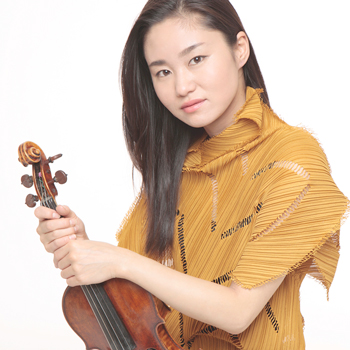by Daniel Hathaway

The symphony threw down a considerable challenge for an orchestra of 39 musicians — 21 string players and 17 winds, plus timpani. Schumann’s string writing is busy and exposed, and achieving a fine balance between strings and winds is not easy to pull off even with standard, symphonic-sized string sections.
Dorman had a detailed plan for putting the “Spring” symphony across, and CityMusic Cleveland was right at the tips of his batonless fingers for all 35 minutes of the compact work’s duration. Their mood was uniformly cheerful, their ensemble was precise, and their blend was warm yet bright. Horns, trumpets, and trombones — situated at opposite sides of the orchestra — skillfully held their tone in check to match the strings, producing perhaps the most musically distinguished work we’ve recently heard from CityMusic.
Avner Dorman gave some charming remarks before the symphony, demonstrating how its opening theme had been altered in rehearsals led by Felix Mendelssohn before its premiere to correct for notes which were unplayable on the valveless horns of the day. CityMusic’s horns — with valves — sounded splendid in Schumann’s original version.
Of course, this itinerant ensemble has to make the most of whatever acoustical situation its venue presents on a given night. Happily, Lakewood Congregational is designed after a typical New England meeting-house with a three-quarter balcony, making its acoustics warm, clear, and immediate. Only the timpani stood out — not through any fault of the player, but because he was located under the balcony, his drums got a gratuitous boost from its reflective surfaces.
The Brahms concerto was a bit puzzling. Although Sayaka Shoji was in full command of all its technical details and played the solo part with great accuracy and refinement, the piece never quite took wing. Dorman, who spent the piece with his eyes riveted to the score, conducted with sharp, angular, keep-it-all-together gestures rather than creating a long musical narrative and a sense of sweep and destination. There was nothing wrong with ensemble or balance — if anything, the solo violin was at an advantage with such a small ensemble — but the performance was oddly uninvolving.
Take for example Brahms’s gorgeous wind writing at the beginning of the slow movement, which can be such a great moment for the wind section (the Harmonie in a German orchestra). Intonation and balances were spotless, but the expressive shaping of lines and the kind of musical bloom we heard later in the Schumann went missing in the Brahms.
A number of listeners took their leave after intermission. Too bad. Those who missed the Schumann tonight missed a lot.
Published on ClevelandClassical.com October 19, 2015.
Click here for a printable copy of this article



